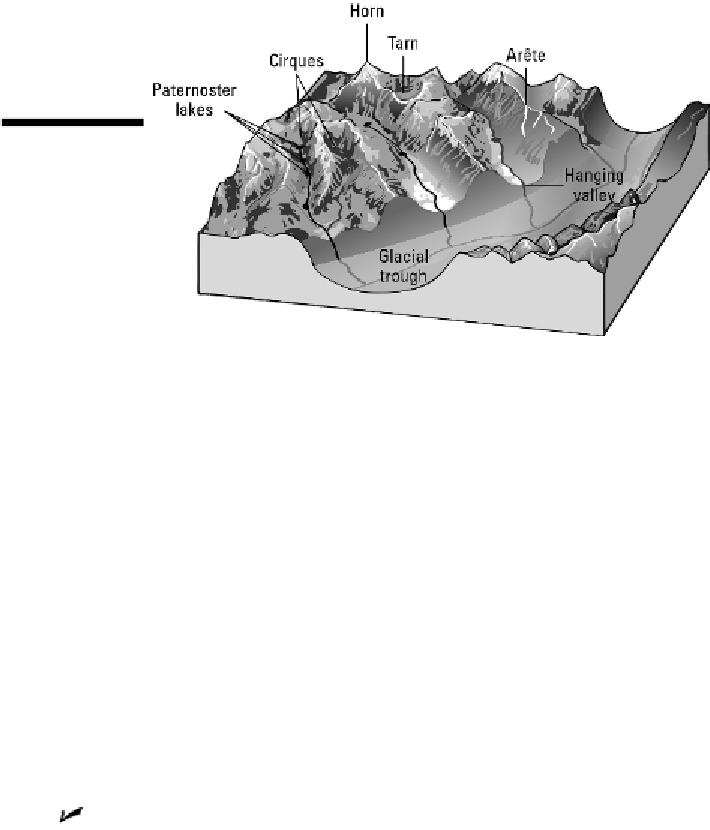Geology Reference
In-Depth Information
Figure 13-2:
Land-
scape features of
alpine glacial
erosion.
Speaking French: Cirques, arêtes, et roche mou-
tonnées
Scientists began studying glacial landscapes in the Alps of Europe. That's why many of
the words describing features of glacial erosion have French origins. So when you talk
about glacial landscapes, you'll find yourself speaking French!
Alpine glacial erosion
Features of alpine glaciation are what remain on any mountainous landscape after glaci-
er ice has retreated or melted. Many of the jagged mountain landscapes you see today
are the result of glaciation that occurred thousands of years ago. The features I describe
here are labeled in Figure 13-2.
Paternoster lakes:
These lakes are created in the glacial trough as ice plucks
pieces of bedrock from the valley floor, leaving a string of holes that are later filled
by water and become lakes.
Cirques:
Cirques
are the circular (or half-circle shaped) depressions near a moun-
taintop where alpine glaciers begin. Cirques are rounded or U-shaped, scoured fea-
tures that often fill with water and become cirque lakes (called
tarns
) after the gla-
cier disappears.
Arêtes:
When multiple glaciers exist on a mountain, two cirques may create a
sharp, steep ridge of erosion-resistant rock between them. This linear ridge is
called an
arête.





